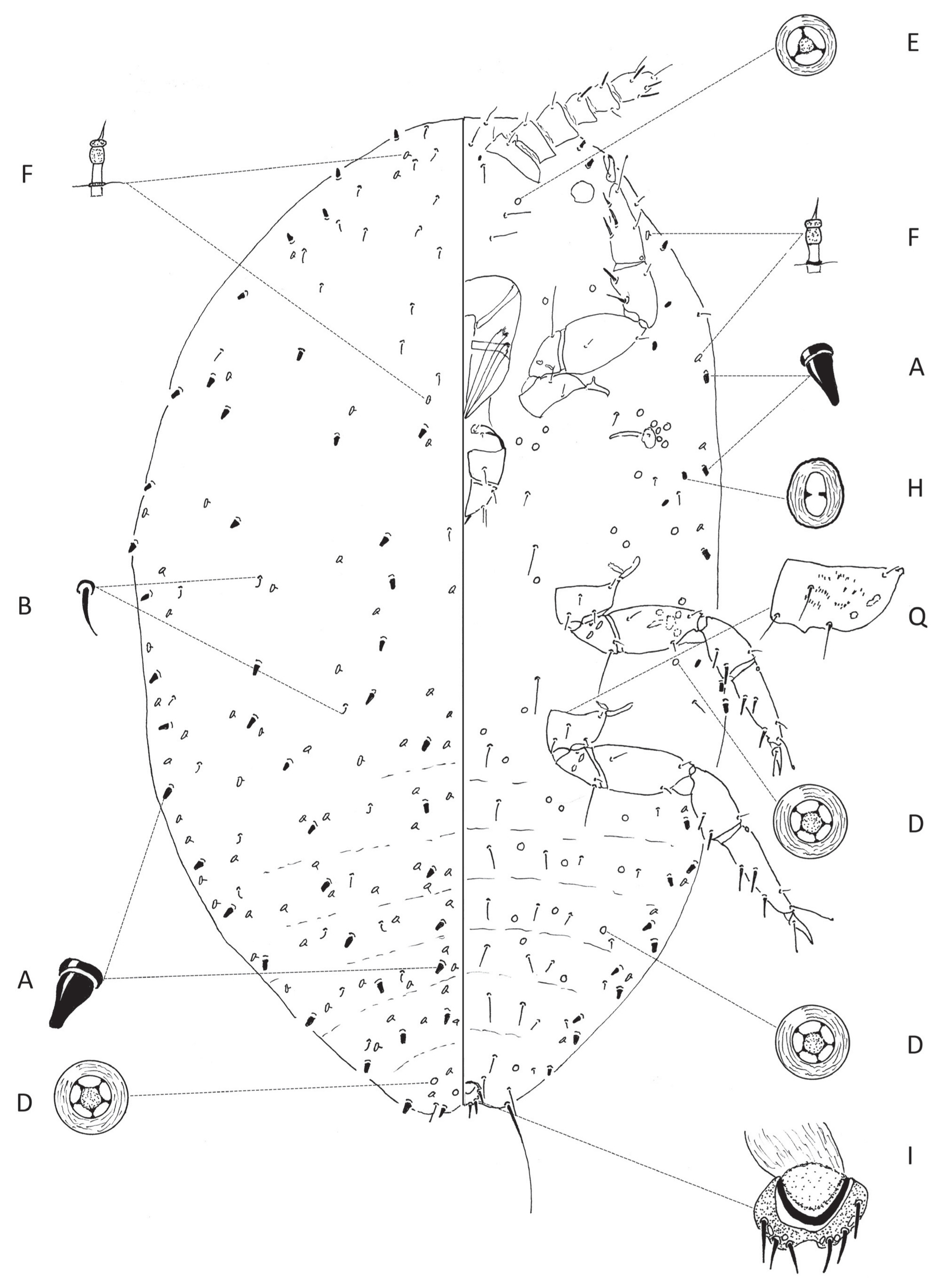Valid Names Results
Spiroporococcus braggi (Cockerell & Robinson, 1915) (Eriococcidae: Spiroporococcus)Nomenclatural History
- Fonscolombia braggi Cockerell & Robinson 1915: 106. Type data: UNITED STATES: Colorado, Boulder Co., Boulder, on Berberis repens, 31/05/1911, by Bragg. Syntypes, female, Type depository: Davis: The Bohart Museum of Entomology, University of California, California, USA; accepted valid name Illustr.
- Pseudochermes braggi (Cockerell & Robinson, 1915); Lindinger 1933: 32. change of combination
- Ripersia braggi (Cockerell & Robinson, 1915); Lindinger 1937: 195. change of combination
- Tychea braggi (Cockerell & Robinson, 1915); Lindinger 1943a: 151. change of combination
- Gymnococcus braggi (Cockerell & Robinson, 1915); Ferris 1955a: 184. change of combination Illustr.
- Ovaticoccus braggi (Cockerell & Robinson, 1915); Boratynski 1958: 174. change of combination
- Spiroporococcus braggi (Cockerell & Robinson, 1915); Miller & McKenzie 1967: 529-531. change of combination Illustr.
Common Names
Ecological Associates
Hosts:
Families: 1 | Genera: 1
- Berberidaceae
- Berberis repens | CockerRo1915
Geographic Distribution
Countries: 1
- United States
- Colorado | CockerRo1915
Keys
- MillerSt2022: pp.90 ( First instar ) [Ovaticoccus and Hypericicoccus species and Spiroporococcus braggi]
- MillerSt2022: pp.185 ( Adult (F) ) [Spiroporococcus species]
- MillerMc1967: pp.529 ( Adult (F) ) [North American species of Spiroporococcus]
- Ferris1955a: pp.179 ( Adult (F) ) [North American species of Gymnococcus] Key as: Gymnococcus braggi
Remarks
- Systematics: Slide-mounted second-instar female with: enlarged setae absent; hair-like setae scattered over dorsal surface; anal ring with few pores; dorsal multilocular pores absent; ventral multilocular pores predominantly with 5 loculi; cruciform pores present on venter on marginal area of abdomen; antennae 7-segmented; 2 or 3 multilocular pores in atrium of spiracles; microtubular ducts medium in length, with 2 sclerotized areas (Miller & McKenzie, 1967).
- Structure: Adult unknown. Nymph bright red. Produces a filamentous sac, which does not cover the entire body (Cockerell & Robinson, 1915).
- General Remarks: Detailed description of late instar nymph in Miller & McKenzie (1967). The second-instar female and second-instar male of this species were erroneously described by Miller and McKenzie (1967) as (“second [?] instar”) and (“third-instar”) respectively. The description of the second-instar female was redescribed and illustrated in Miller & Stocks (2022).
Illustrations
Citations
- Boraty1958: distribution, taxonomy, 174
- CockerRo1915: description, distribution, host, taxonomy, 106
- Ferris1919a: taxonomy, 19
- Ferris1921: taxonomy, 79
- Ferris1955a: description, distribution, host, illustration, taxonomy, 184
- Hoy1963: catalog, distribution, host, taxonomy, 183
- Kozar2009: distribution, taxonomy, 107
- KozarKo2008a: taxonomy, 148
- Lindin1933: taxonomy, 31-32
- Lindin1937: taxonomy, 195
- Lindin1943a: taxonomy, 151
- MacGil1921: distribution, host, 141
- McKenz1964a: taxonomy, 25
- MillerGi2000: catalog, description, distribution, host, taxonomy, 462
- MillerMc1967: description, distribution, host, illustration, taxonomy, 529-531
- MillerSt2022: description, diagnosis, distribution, illustration, key, nymph, 185-187
- PooleGe1997: distribution, 355
- Willia1985a: catalog, distribution, host, 217



